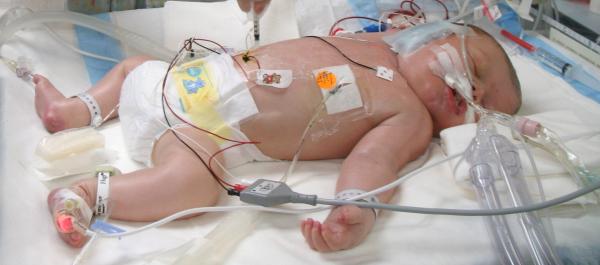The opioid epidemic is center stage when it comes to political agendas, media stories and national discussion. However, very little of this outrage shines any spotlight on the adverse impact this public health crisis has on children and adolescents. It is unfortunate since efforts to break the cycle of addiction must extend to the family unit or long-term progress and solutions will never endure. Considering opioid-related hospitalizations warranting the highest level of intensive care unit admission doubled between 2004 and 2015 in this population and much of the pediatric problems arise from accidental ingestion from adult use, comprehensive strategies haven’t but need to include our most vulnerable.
New research just published in the journal Pediatrics explores the trends associated with the rapid increase in the annual rate of pediatric opioid-related hospitalizations. During the time period previously mentioned, the authors calculated a 35% increase in pediatric intensive care unit (PICU) admissions for opioid ingestion. They further demonstrated escalating rates of use of mechanical ventilation and life-saving and sustaining medications like vasopressors and naloxone per PICU stay.
Misperceptions over opioid epidemic
A big misperception that is frequently perpetuated is that opioids are all the same whether prescription or illicit and that simple curtailing of dispensing such drugs is a cure-all maneuver. Sadly, pharmacology and addiction don’t work this way. Complex problems necessitate complex solutions. For example, methadone is a medicine often used for harm reduction to help an individual taper their opioid dependence. That is different from the pain medicine potentially prescribed to someone after surgery. And, this is different from the heroin illegally obtained that may be mixed with other worrisome drugs - each with varying potencies and half-lives to individuals with disparate tolerance levels. Then, you have the issues that come with multi-drug use, misuse and abuse.
This is why this recent retrospective cohort study included hospitalizations for those attributed to opioid toxicity albeit prescription or illicit like heroin, opium, methadone and other opiates.
Much of the pediatric ails are a result of adult ones
Not much has changed since my December 2016 article Opioid-Addicted Babies on the Rise (read here). In it, I address a research letter in JAMA Pediatrics claiming “Incidence rates for neonatal abstinence syndrome (NAS) and maternal opioid use increased nearly five-fold in the United States between 2000 and 2012.” Understanding the complexities of a disease state—especially one as expansive as addiction— involves exploring the individual’s health and physical examination, environment, occupation, education, community, socioeconomic influences, genetic, personal habits, social interactions, living environment, family history, life and childhood history, phenomenology or biopsychosocial spheres.
Outlawing a drug is like putting a band-aid on a ruptured artery. As a policy measure, it makes everyone feel good, but in the real world contributes to secondary problems sometimes worse than the inciting one and rarely makes a dent.
The recent work identifies that for children less than 6 years old, opioids account for the majority of poisonings. Kids this young are stimulated by everything in their environment as they go through a developmental explosion. Textures, scents, smells excite them. They place everything in their mouths. So, it comes as no surprise that though the majority of opioid-related hospitalizations occurred in teenagers 12-17 years old, one-third were of kids under 6 years of age.
Subtypes of opioid ingestion demonstrated for those 1-5 years old 19.5% of the poisonings were due to methadone. In those 12-17 years old, 9.8% were due to methadone, but 4.4% were from heroin. Don’t forget, these trends are further paralleled by increased annual rates of emergency room visits and hospitalizations for opioid toxicity in children.
Solutions need to be nuanced
Understanding exposure risk is essential to elucidating a path to viable solutions. The access young children have to medications, opioids or any in general, is a direct result of parental or household availability. Poisonings tend to be accidental in nature. When it comes to teenagers, self-harm, self-medicating or recreational use are typically a result of intentional motivations. For policies to make any strides, they need to be geared toward these disparities.
Additionally, continuing to ignore the symbiotic basis of the parent-child relationship and the adverse effects of unrelenting toxic stress in childhood undermines current efforts to combat this epidemic. For the crisis to abate for future generations, strategies must become a family affair.




